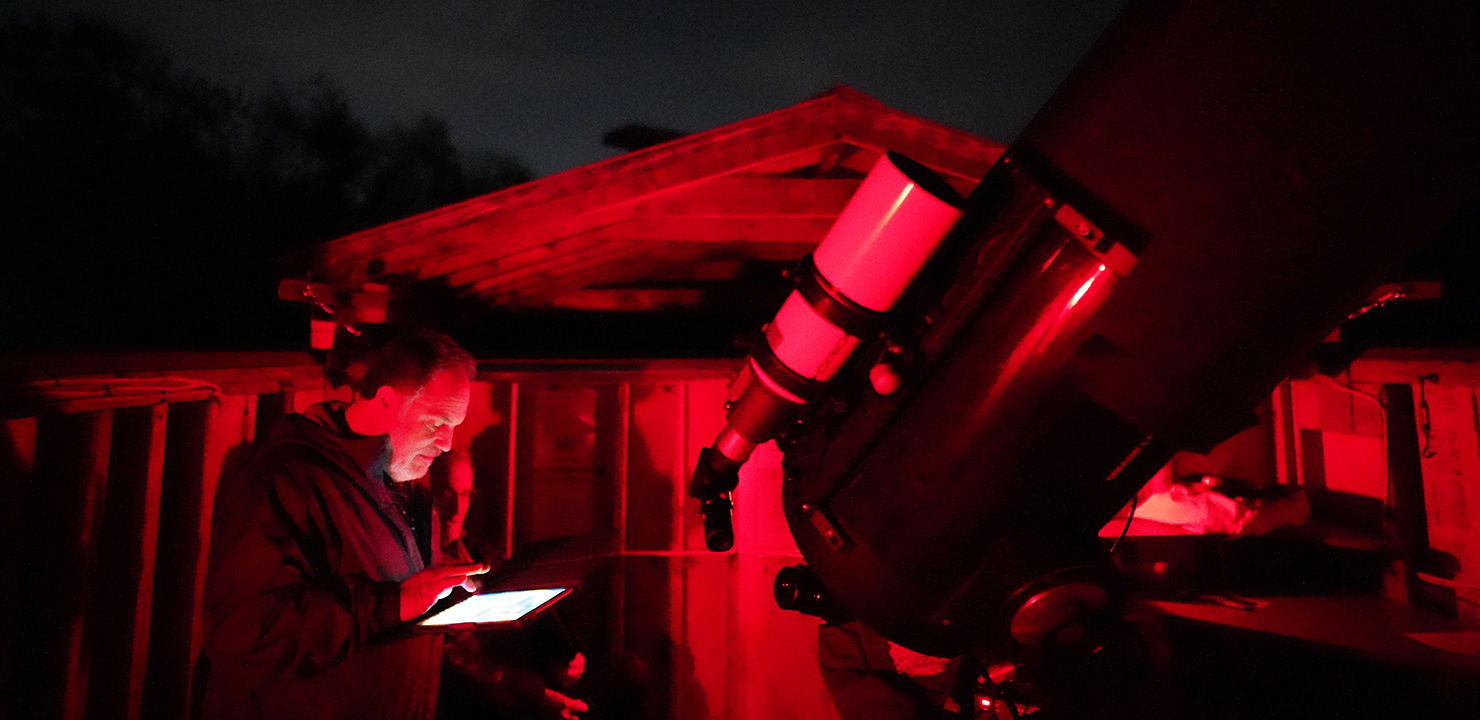
Seagrave Observatory Night
by Jim Hendrickson & Mark Munkacsy
Last night the Clark was very well-behaved, and Saturn looked good despite intermittent high clouds. Last night was also my first successful experience with setting circles on that mount. I was able to successfully slew up to 20-30 degrees from Saturn and Deneb to targets too faint to be seen in the finder scope (Neptune and the deep red carbon star TT Cyg).
There is a problem with wasps in the observatory. When I first entered the room, I found a dozen dead wasps on the observatory floor. They were kind of a non-issue while we were observing, but when it came time to close things up, you could see wasps flying around near the roof when I closed the upper shutter, one or two of which came down to "people level" to investigate. I spent a little bit of time trying to find the nest, but I didn't see anything obvious.
-- Mark
Despite clear skies and clear sky forecasts throughout the day Saturday, October 18, bands of high clouds and haze filled in at sunset, and persisted for about the first hour of observing, before gradually clearing out from north to south.
Entering the observatory grounds, the Big Dipper hung low over the dome, Comet Lemmon already below the treeline.
Mark Munkacsy was up in the Clark showing Saturn and the carbon star TT Cygni.
Luke Labriola opened the 12-inch Meade and operated it for a short time but had to leave early due to travel early the next morning. Jay Baccala took over and operated the Seestar S50 alongside the Meade, capturing images of the Coathanger, Helix Nebula, and M15.
As the sky became more transparent, the Milky Way could be seen faintly within Cygnus.
Throughout the evening, a great horned owl some distance away in the west
We finished and closed the observatory at 10:15pm, under clear skies.
-- Jim



